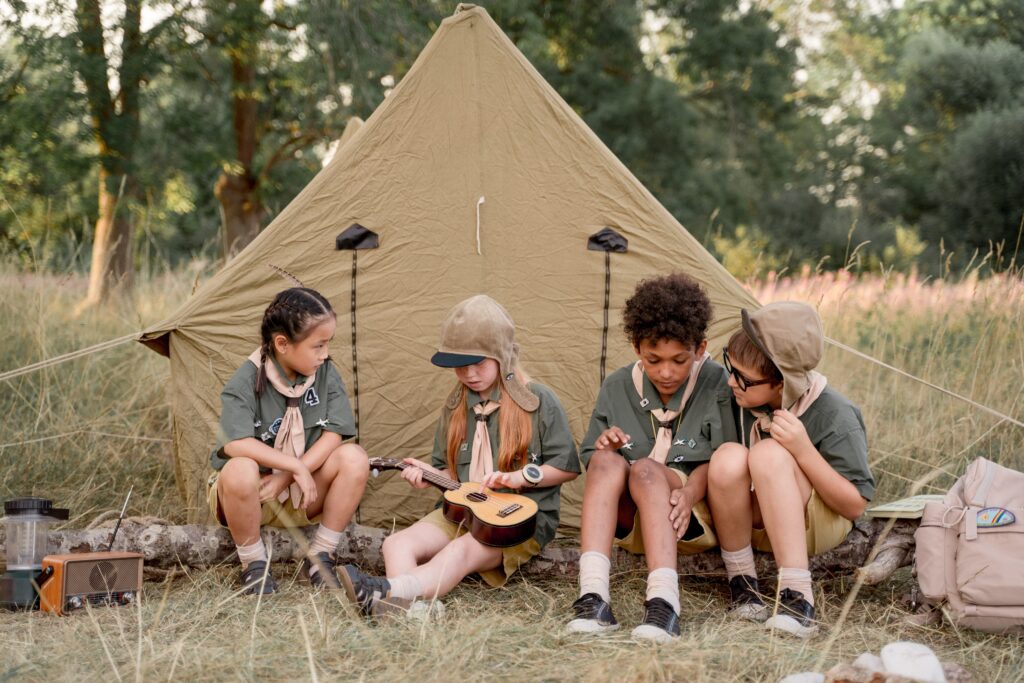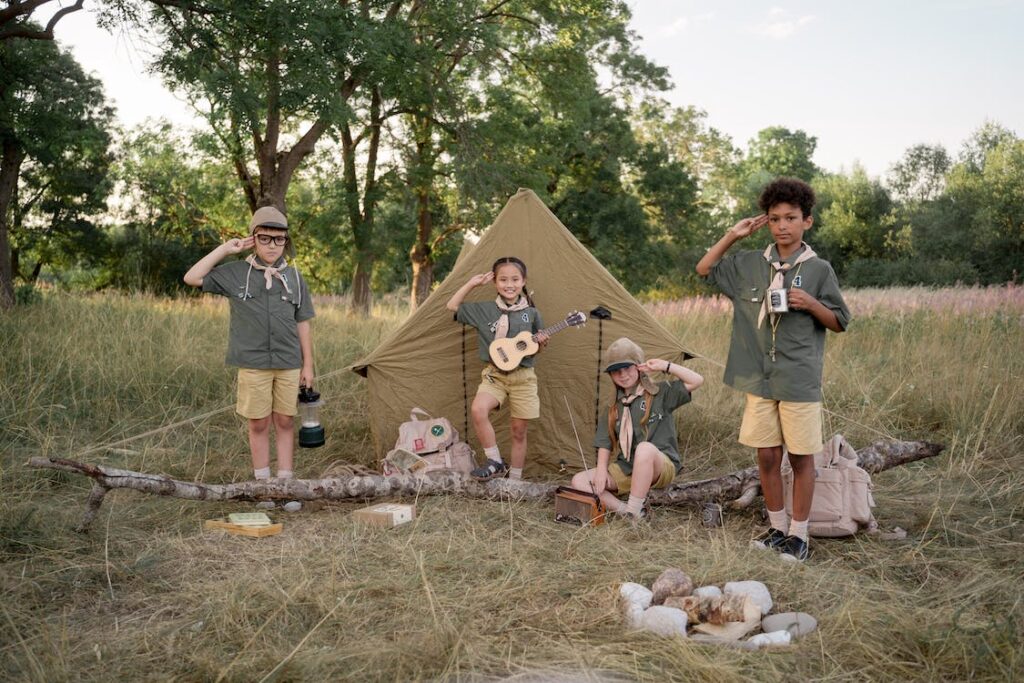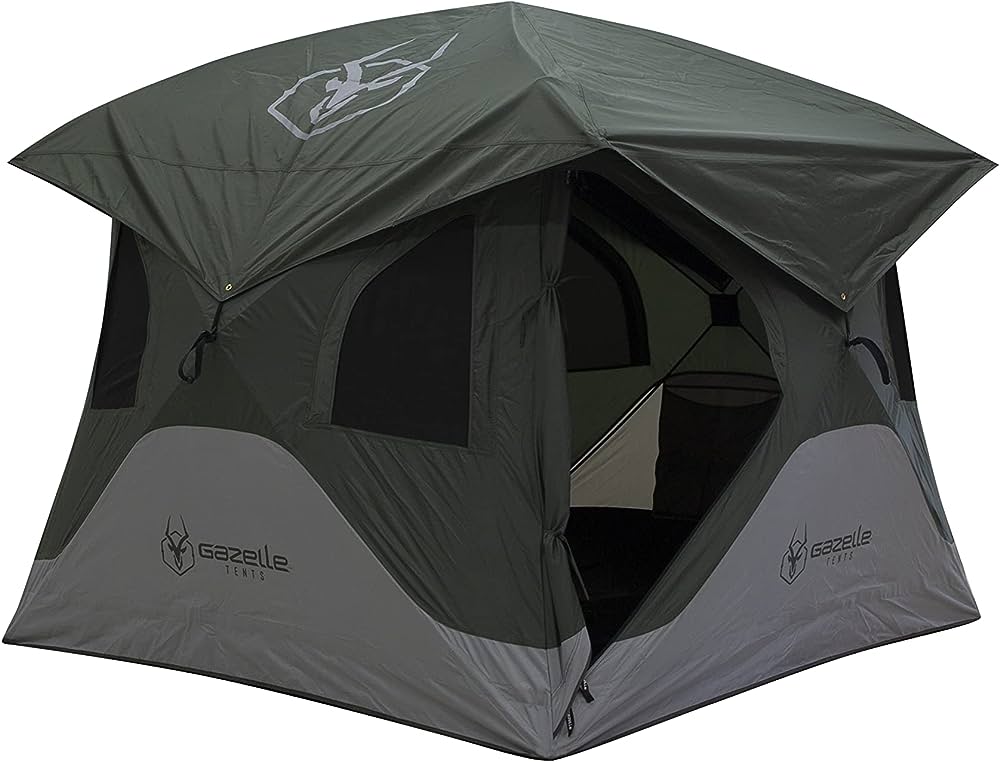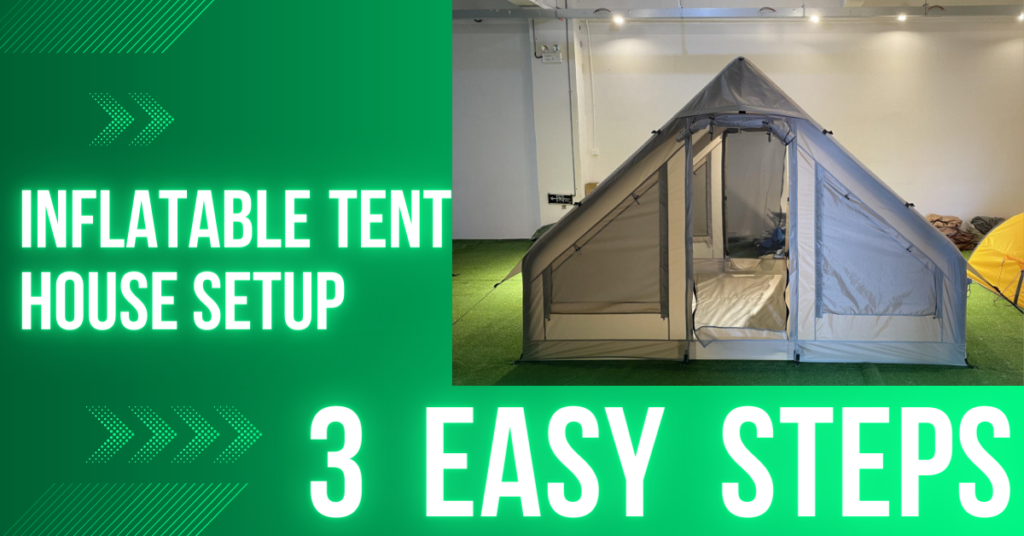
Camping with kids may be a memorable experience, but safety should always be the main priority. This thorough book will cover important safety recommendations and first aid knowledge to guarantee a safe and enjoyable camping vacation for the entire family
Tips for Enjoyable Camping with Kids

Camping with kids may be a beautiful opportunity to introduce them to the wonders of nature. However, it is critical to emphasize safety at all times. Let’s look at ways to ensure a safe and pleasurable camping vacation for your entire family, from selecting the correct park to packing efficiently.
Selecting the Best Campground
Before you go, look for campgrounds that are family-friendly and provide the facilities you require. Look for areas with flat terrain, clean restrooms, and easy access to water sources. Inquire about their safety policies and emergency procedures as well.
Location: Determine if you want a campsite near to home for a short trip or a more isolated experience. Consider the environment: do you enjoy mountains, woods, lakeshores, or coastal areas?
Accessibility: Determine if the campsite is conveniently accessible by your means of transportation, particularly if you’re hauling camping equipment. Some campgrounds may be accessible only by trekking or off-road driving.
Amenities: Campground facilities range from basic sites with minimal amenities to those with showers, bathrooms, picnic spaces, and even electricity hookups. Choose based on your degree of comfort and needs.
Activities: Determine which outdoor activities you enjoy. Hiking routes, fishing locations, water activities, and animal viewing are all available at certain campgrounds. Investigate the activities that are offered in the neighbourhood.
Types of Campsites: Campsites can be classified as tent-only, RV-friendly, or both. Check that the site type suits your camping gear.
Reservations: Check to see whether the campsite requires reservations. Popular destinations frequently fill up fast, so plan ahead.
Regulations: Learn about the campground’s policies on dogs, campfires, quiet hours, and other requirements. Check that they are in line with your plans.
Recommendations and Reviews: Look for reviews online or ask fellow campers for recommendations. They can provide you information on the campground’s condition, facilities, and overall experience.
Considerations For The Weather: Be informed of the average weather conditions for the dates you wish to camp. Prepare for possible rain, wind, or temperature changes.
Safety: Prioritize safety by selecting a well-kept campsite with a strong reputation for security. Learn about the local fauna and its threats.
Group Size: If you’re camping with a large group, make sure the campsite can accommodate your group size and has adequate room for everyone.
Duration: Decide if you want to go for a short weekend getaway or remain for a longer period of time. Some campsites have time limits on how long you may remain.
Environmental effect: To reduce your environmental effect, choose a campsite that supports responsible camping practices, such as the Leave No Trace guidelines.
Budget: Budget for camping fees, permits, and any other connected costs. Compare the price to the worth of the amenities provided.
Cellular coverage: Depending on your needs, you may prefer a campsite with decent cellular coverage or one that provides a total vacation from technology.
Family Camping Packing Tip
Packing wisely is essential for a good camping trip. Make a list of necessities such as clothing, bedding, cooking materials, and personal stuff. Don’t forget to carry additional clothing in case the weather changes.
Setting Up Camp Safely

Upon arrival, select a suitable camping spot away from hazards like dead trees, steep cliffs, or bodies of water. Teach your kids how to set up tents safely and involve them in the process to foster a sense of responsibility.
Fire Safety Precautions
Campfires are an integral part of camping, but they can also pose risks. Always follow campground rules regarding fires and keep a bucket of water and a shovel nearby. Teach your children about the dangers of fire and the importance of staying a safe distance away.
Navigating Nature Trails with Kids
Exploring nature trails is a fantastic way to connect with the environment. Keep the pace comfortable for kids, and encourage them to stay on marked paths. Teach them to identify plants like poison ivy to avoid accidental contact.
- Choose Kid-Friendly Trails: Opt for trails that are relatively short, well-marked, and suited to the age and physical abilities of your children. Look for trails with interesting features like streams, viewpoints, or wildlife sightings to keep them engaged
2. Safety First: Prioritize safety by packing essentials like a basic first aid kit, insect repellent, sunscreen, and plenty of water. Teach kids about trail safety, such as staying on the path, not touching unknown plants or animals, and following your lead.
3. Educational Opportunities: Turn the trail into a learning experience. Identify plants, birds, and insects, and share interesting facts about them. Engage their curiosity by encouraging questions and observations.
4. Pack Snacks and Breaks: Kids might need frequent breaks. Plan for pauses to rest, have snacks, and take in the surroundings. Snacks can be a fun motivator for reaching a specific point on the trail.
5. Interactive Activities: Introduce games and activities to make the hike enjoyable. Scavenger hunts, where kids search for specific leaves, rocks, or wildlife, can be exciting. Bring along binoculars and magnifying glasses for closer exploration.
6. Nature Journals: Provide kids with notebooks to create nature journals. They can sketch what they see, jot down interesting details, or even write short poems inspired by the surroundings.
7. Capture Memories: Bring a camera or smartphone to capture memorable moments along the trail. This not only documents the adventure but also allows kids to share their experiences later.
8. Be Patient: Kids might move at a slower pace or get easily distracted. Embrace their curiosity and take the time to appreciate the small wonders they discover.
9. Leave No Trace: Teach kids about respecting nature by following the Leave No Trace principles. Remind them not to litter and to be gentle with plants and animals.
10. Encourage Independence: Depending on their age, allow kids to take the lead occasionally. This fosters a sense of accomplishment and empowerment.
11. Embrace Exploration: Sometimes the best experiences come from deviating a bit from the trail. If it’s safe, allow kids to explore a bit under your supervision.
12. Enjoy the Moment: While the goal is to explore and learn, remember to savor the experience. Let the kids set the pace and relish the time spent together in nature.
Water and Food Safety
It is essential to maintain good cleanliness when handling food in order to avoid infections caused by food. Pack perishables in an airtight container in a cooler with ice packs. Bring a water filter or purifying tablets as well to assure access to safe drinking water.
Weather Alert: Camping Preparation
Weather may be unpredictable, so be ready for unexpected shifts. Pack rain gear, extra blankets, and layers of clothing. Check the weather forecast before leaving the house, and educate your children how to spot signals of changing weather.
First Aid Kit Essentials for Camping
Accidents can occur, especially with energetic children. Pack a full first-aid kit that contains bandages, antiseptic wipes, tweezers, and any prescription drugs that may be required. Prepare yourself for basic first aid practices.
1. Adhesive Bandages: These are useful for covering minor cuts, blisters, and abrasions. Choose a variety of sizes to accommodate different wounds.
2. Sterile Gauze and Adhesive Tape: Gauze pads and adhesive tape are essential for dressing larger wounds and providing protection.
3. Antiseptic Wipes and Hydrogen Peroxide: These help clean wounds and prevent infection. Antiseptic wipes are convenient for quick cleaning, while hydrogen peroxide can be used for deeper cleaning if needed.
4. Tweezers: Handy for removing splinters, thorns, or other foreign objects embedded in the skin
5. Scissors: Useful for cutting tape, gauze, clothing, or other materials in emergency situations.
6. Disposable Gloves: These protect both the patient and the caregiver, ensuring hygiene when tending to wounds.
7. Pain Relievers: Over-the-counter pain relievers like ibuprofen or acetaminophen can alleviate headaches, minor aches, and pains.
8. Antihistamines: These can provide relief from allergic reactions, insect bites, or stings.
9. Thermometer: A digital thermometer helps monitor body temperature, which is crucial in assessing fever or hypothermia.
10. Blister Treatment: Moleskin or blister pads can prevent and treat blisters caused by friction from hiking or walking.
11. Burn Cream or Aloe Vera: These provide relief for minor burns or sunburns.
12. Eye Wash: In case of eye irritation or foreign objects in the eye, saline solution or sterile eye wash can be invaluable.
13. CPR Face Shield: This is a compact device that allows for safe administration of CPR, protecting both the rescuer and the victim.
14. Medical Tape: This is useful for securing dressings or creating makeshift slings.
15. Insect Repellent: While not directly part of the first aid kit, insect repellent is essential for preventing bug bites and potential infections.
16. Prescription Medications: If anyone in your group requires prescription medications, be sure to pack an adequate supply.
17. Emergency Contact Information: Include a list of emergency contact numbers, medical history, and any allergies of the members in your camping group.
18. First Aid Manual: Having a basic first aid manual can guide you through treating various injuries and medical situations.
Common Outdoor Safety Risks
Teach your children about potential outdoor risks including wildlife encounters and bug stings. Teach kids to stay away from animals and to apply mosquito repellant. Also, emphasize the significance of staying hydrated and identifying indications of dehydration.
Teaching Kids about Nature
Camping is an opportunity to teach kids about the environment and the importance of conservation. Engage them in nature-related activities, like bird watching and identifying different tree species. Instill in them a sense of responsibility towards nature.
Safety Measures for the Night
Night time can provide additional obstacles, particularly for younger campers. To alleviate any worries of the dark, use lanterns or flashlights to brighten the encampment. Teach your kids to stay near to the campground and not stray away.
Fun and Educational Camping Activities
Camping is not only about safety; it’s about having fun and creating memories. Plan engaging activities like scavenger hunts, stargazing sessions, and storytelling around the campfire. These activities will keep kids entertained and excited about the outdoors.
Conclusion
Camping with kids can be an incredible adventure that nurtures a love for nature and outdoor exploration. By following these safety tips and being well-prepared, you can ensure a memorable and secure camping experience for your family.
FAQs
Q: How young is too young to take kids camping?
A: While there’s no set age, it’s essential to consider your child’s comfort and safety. Start with backyard camping to gauge their readiness.
Q: What should be in a camping first aid kit?
A: A camping first aid kit should include items like adhesive bandages, antiseptic wipes, tweezers, pain relievers, and any necessary prescription medications.
Q: How can I keep my kids entertained during downtime at the campsite?
A: Plan interactive activities like nature scavenger hunts, card games, and art projects to keep kids engaged and entertained.
Q: What’s the best way to teach kids about wildlife safety?
A: Teach kids to observe animals from a safe distance, avoid feeding them, and never approach wild animals, no matter how cute they may seem.
Q: Can I bring my pet along when camping with kids?
A: It depends on the campground’s pet policy. If allowed, ensure your pet is well-behaved, up-to-date on vaccinations, and leashed at all times.



Pingback: Car camping: top hacks for your journey - camping tips list
Pingback: Camping Safety Tips for Kids: 15 Expert Advice for Safe Adventures - camping tips list